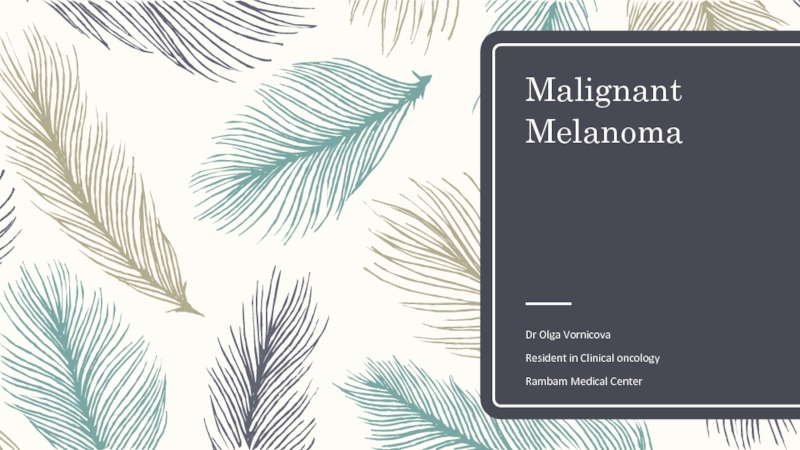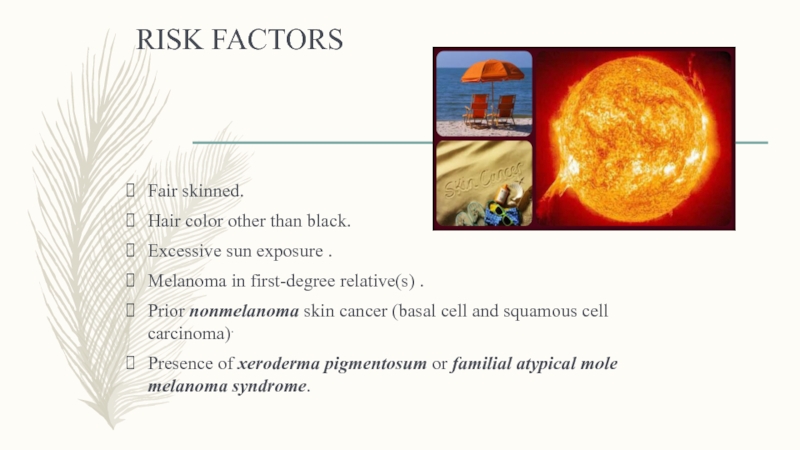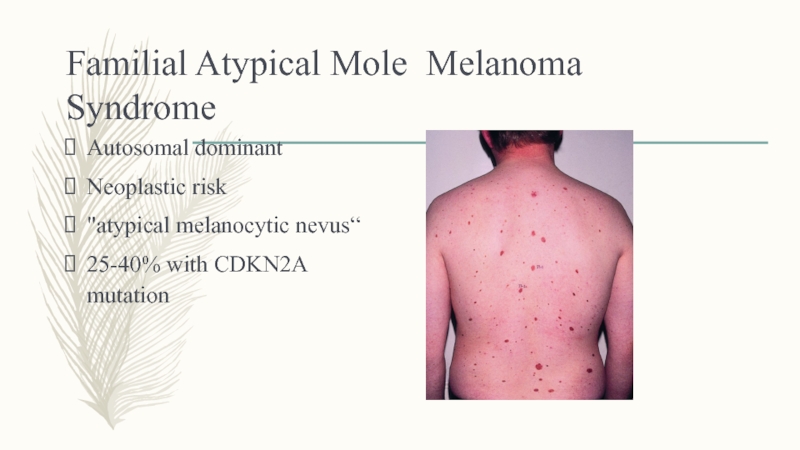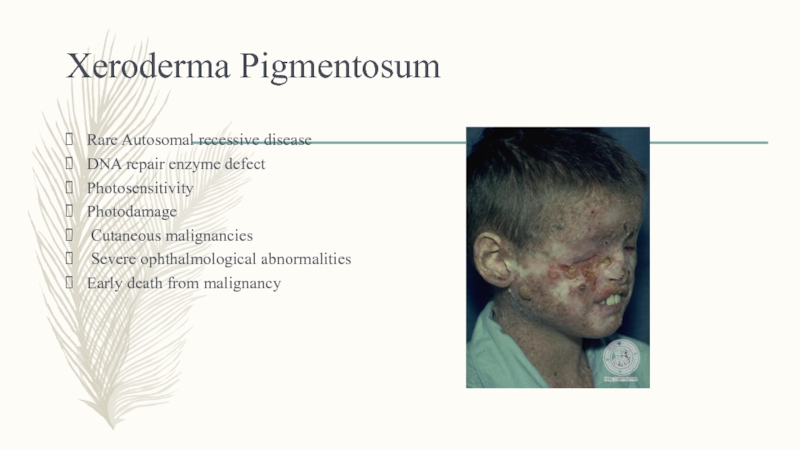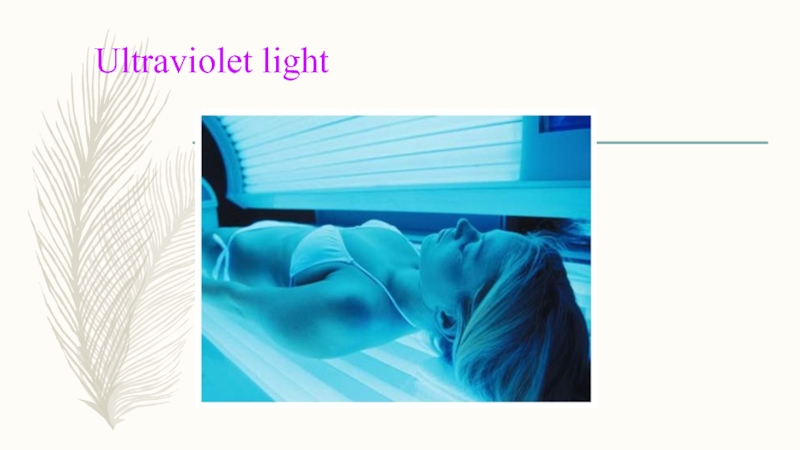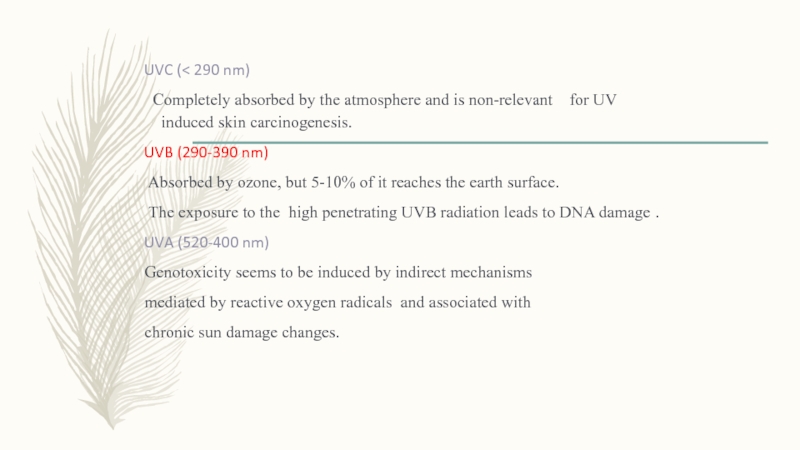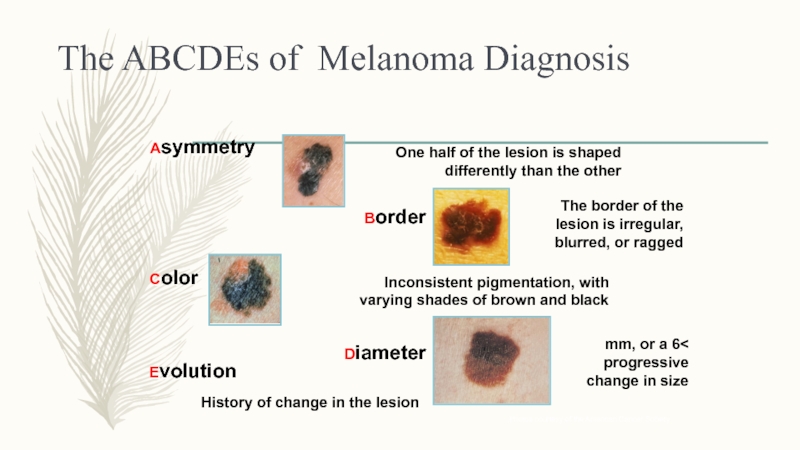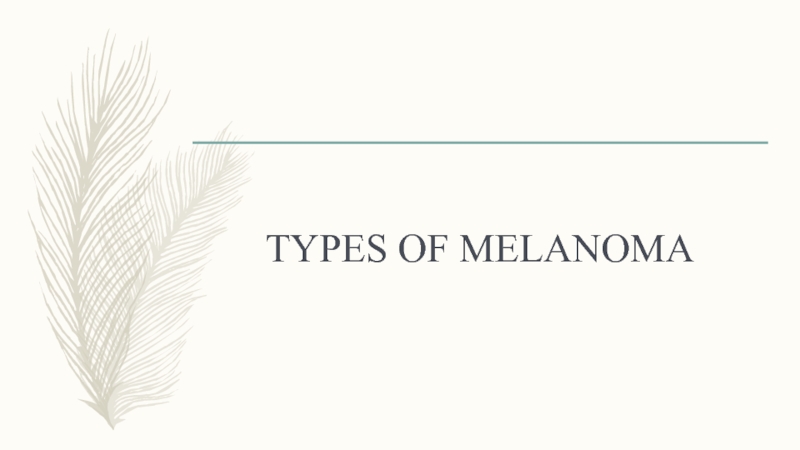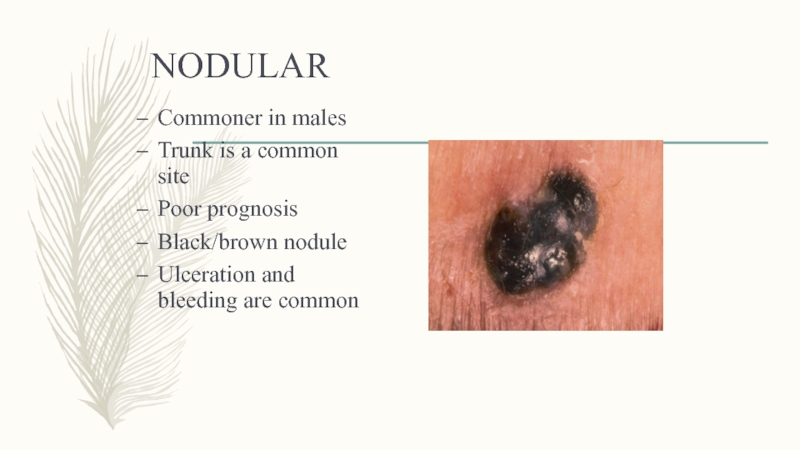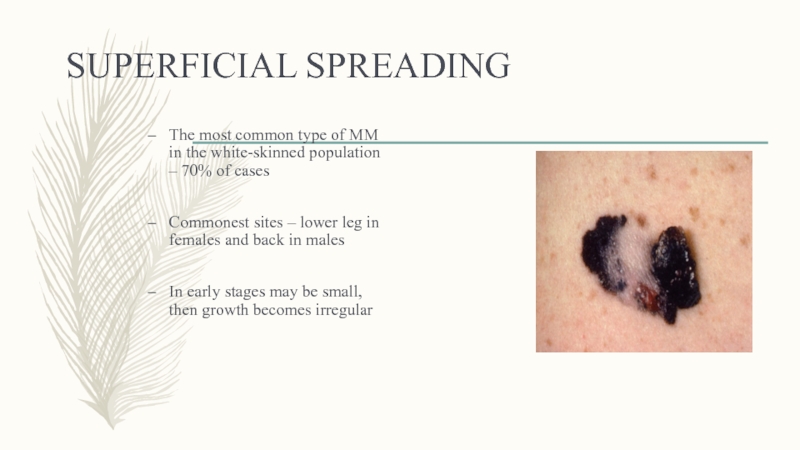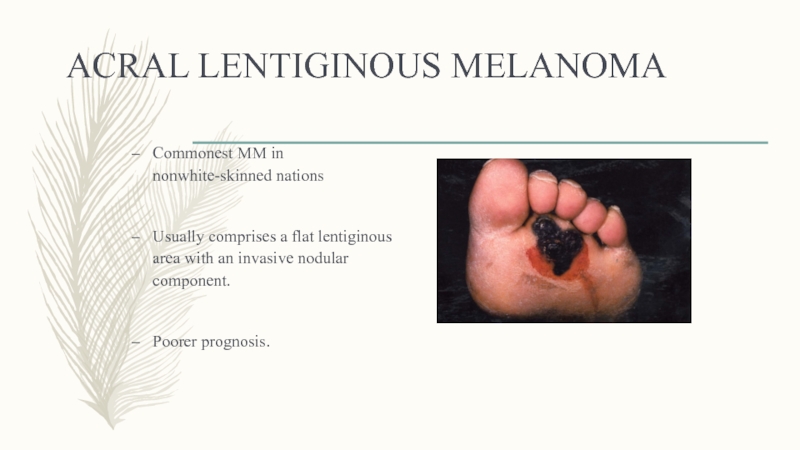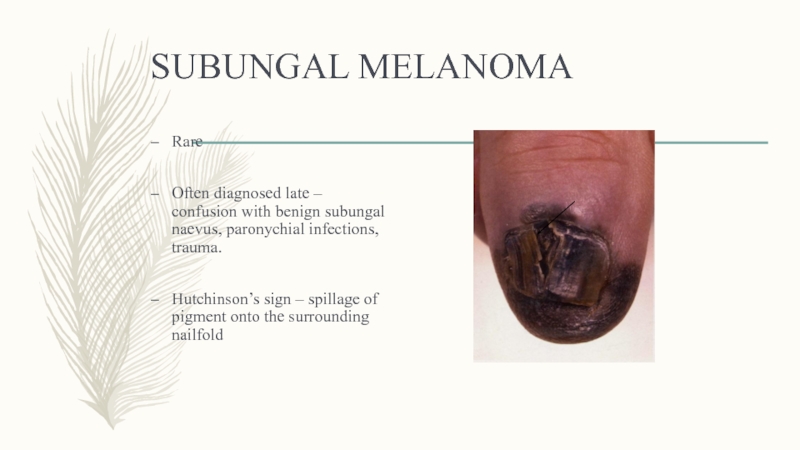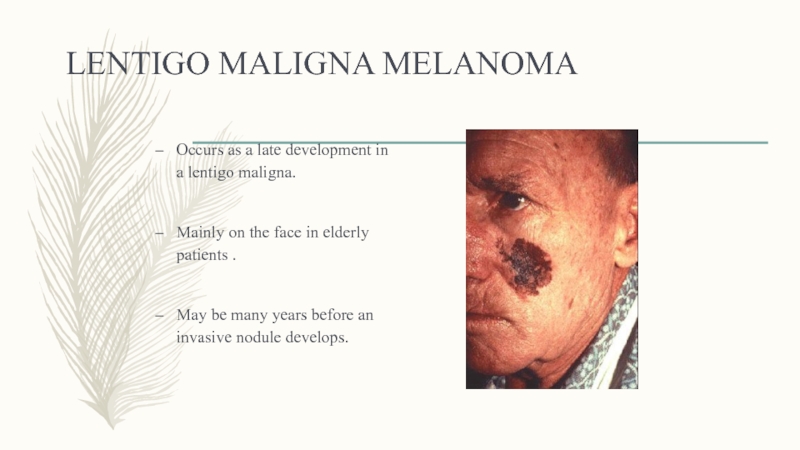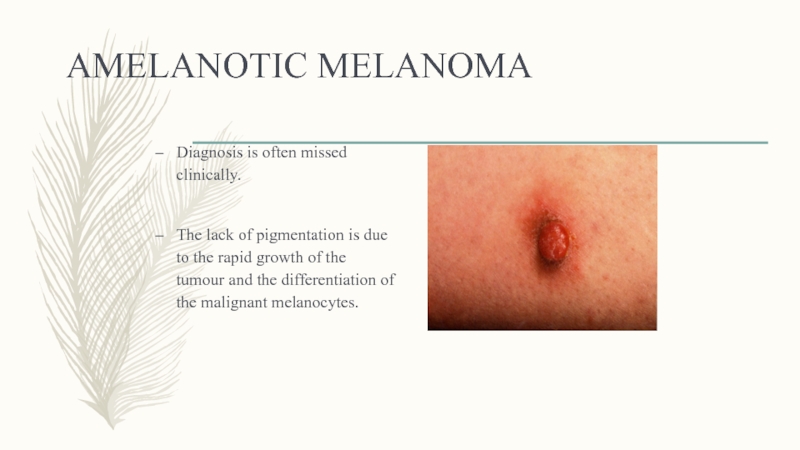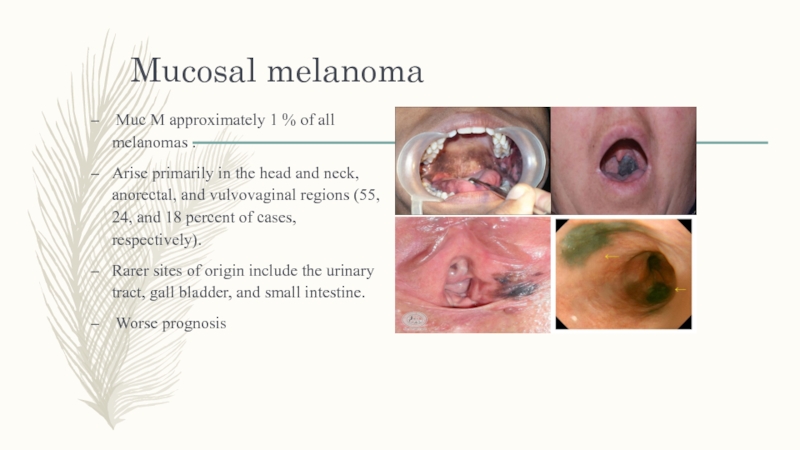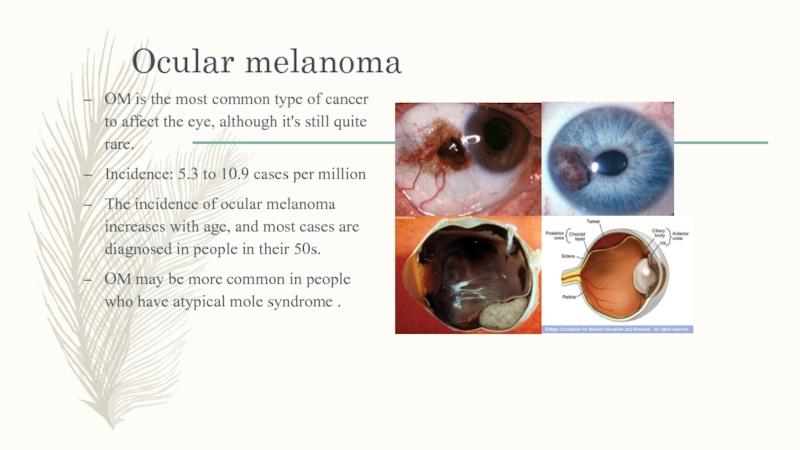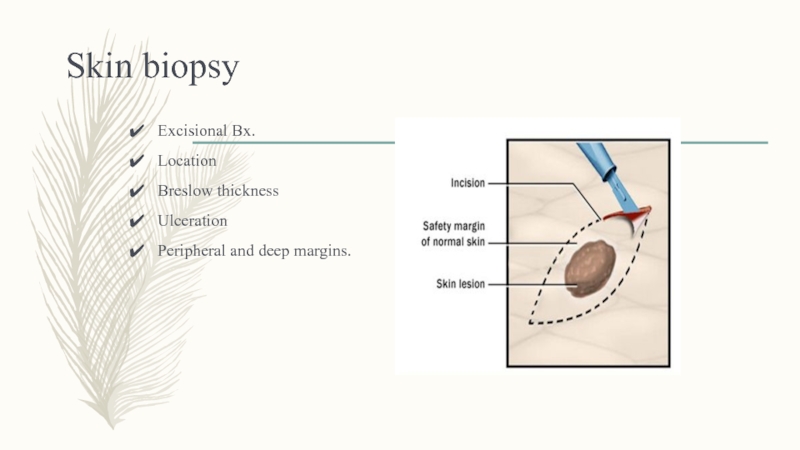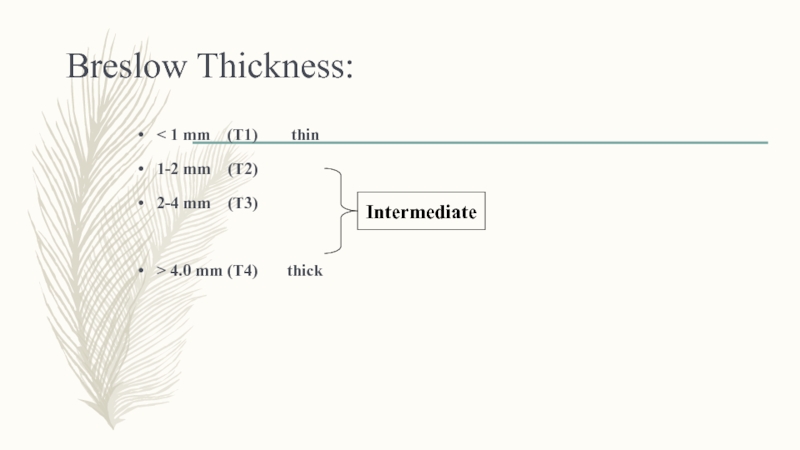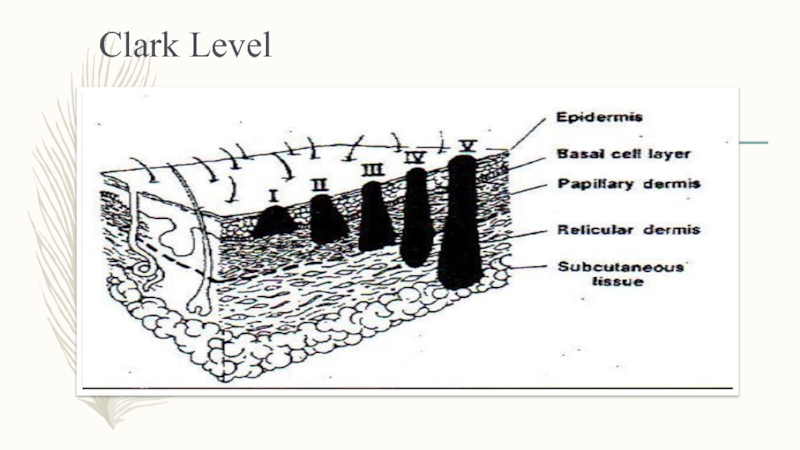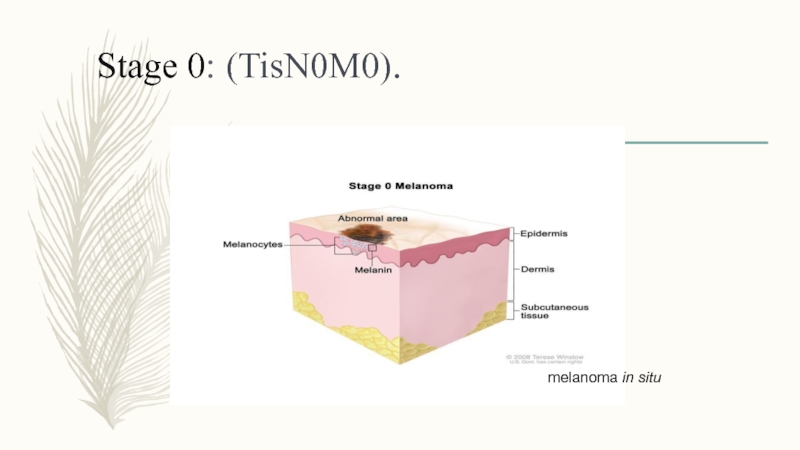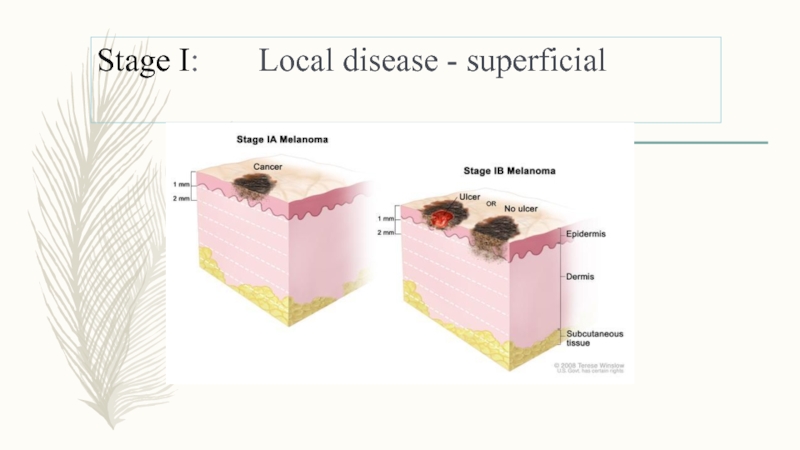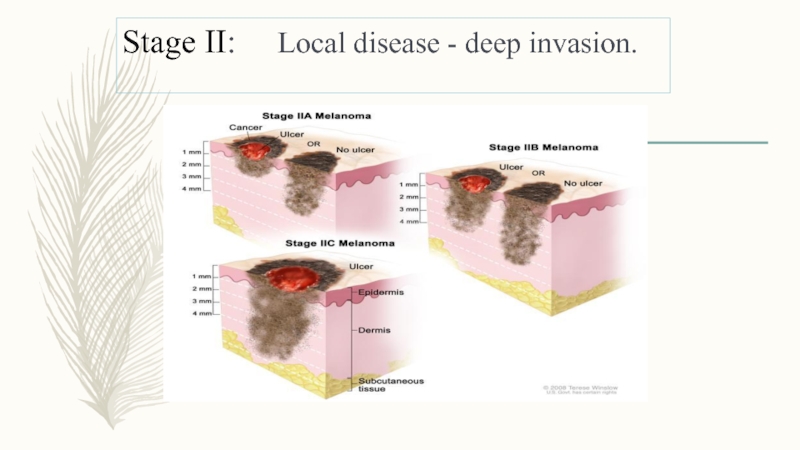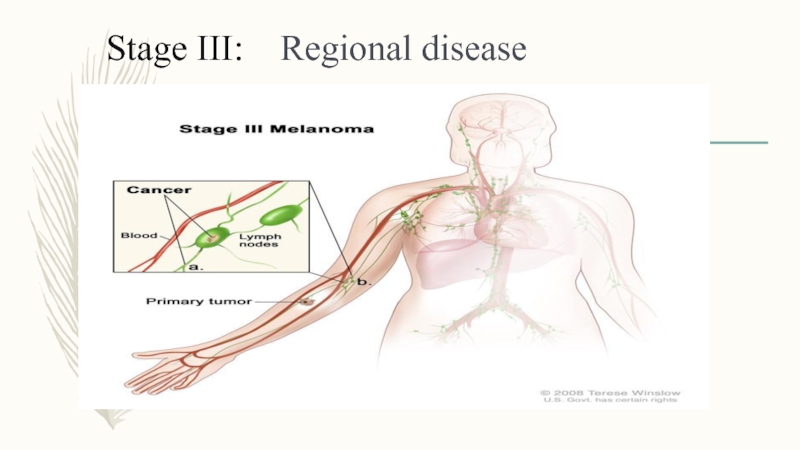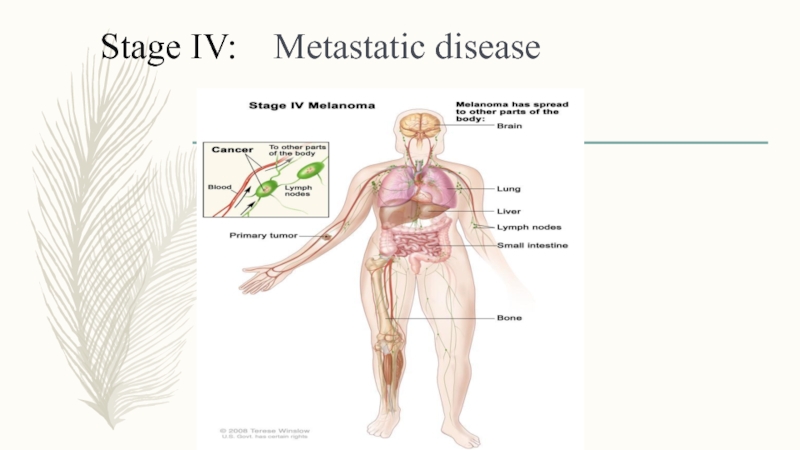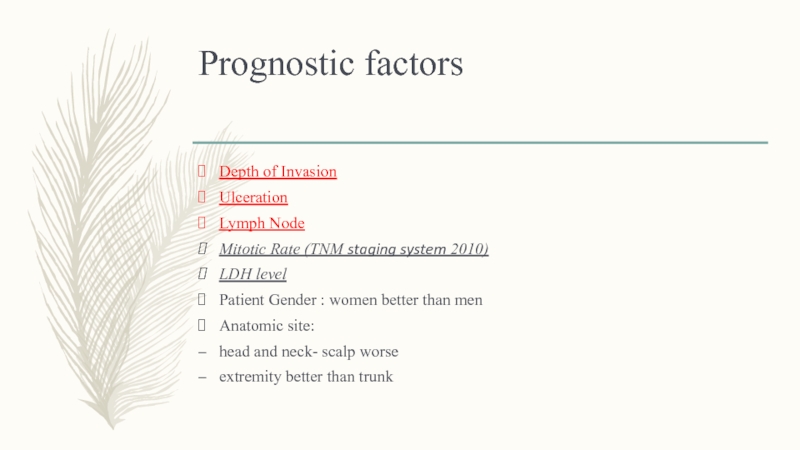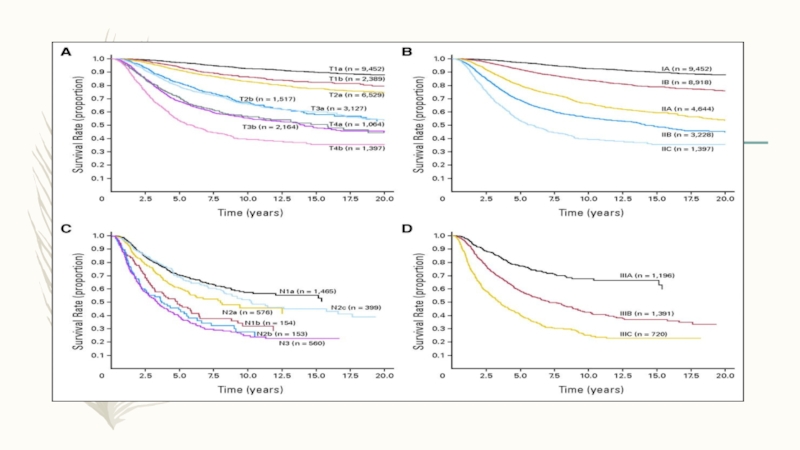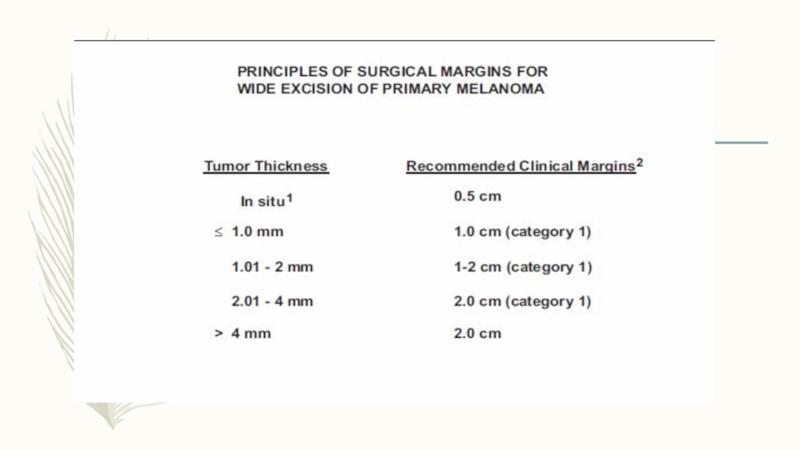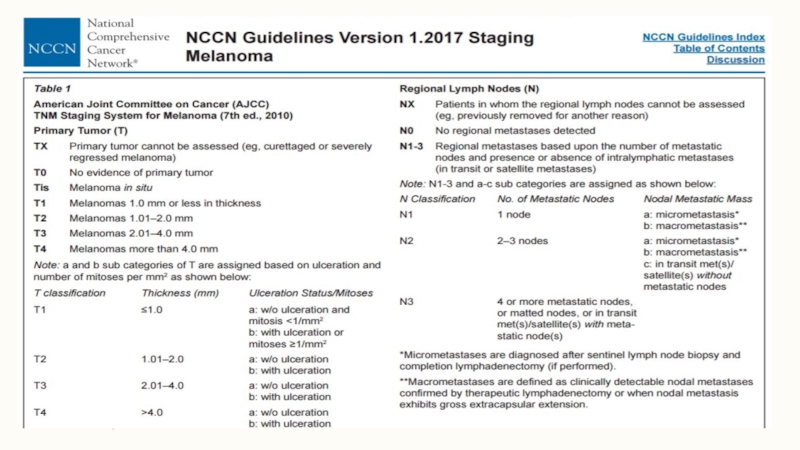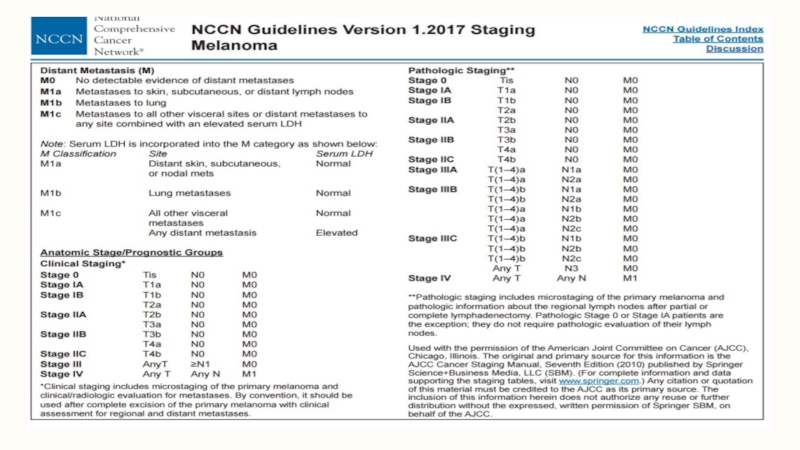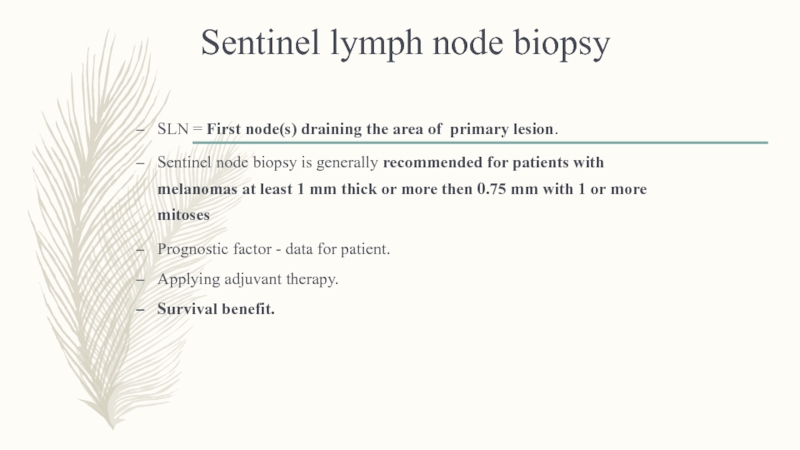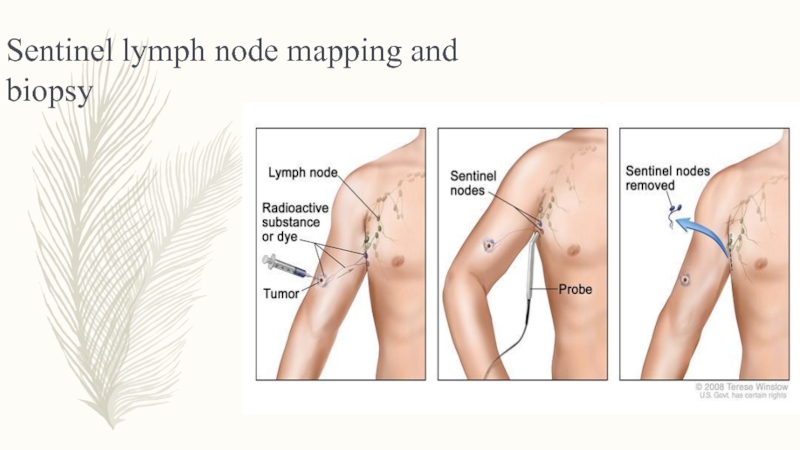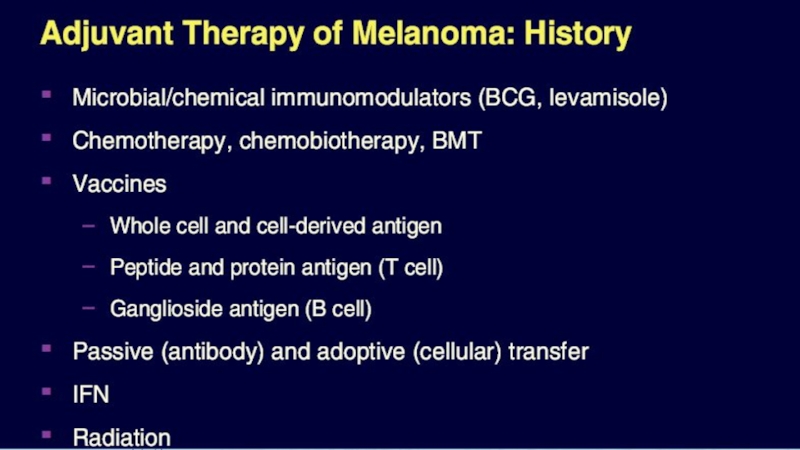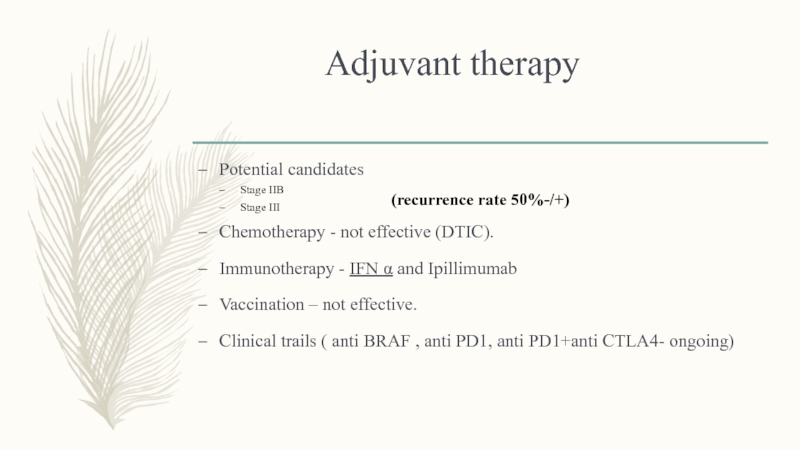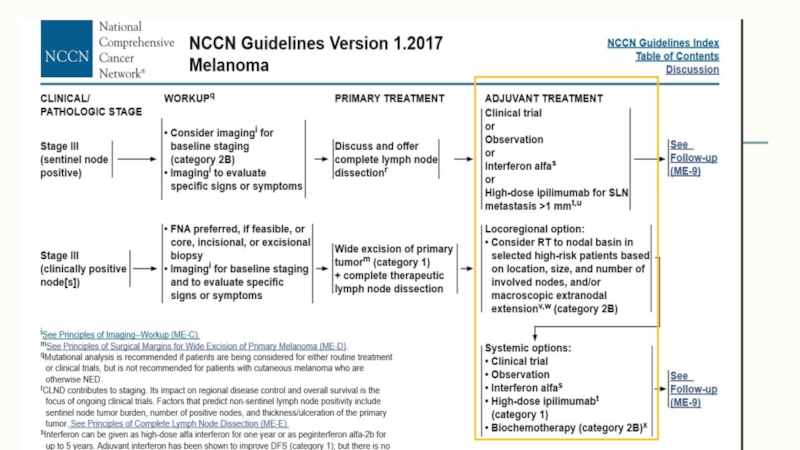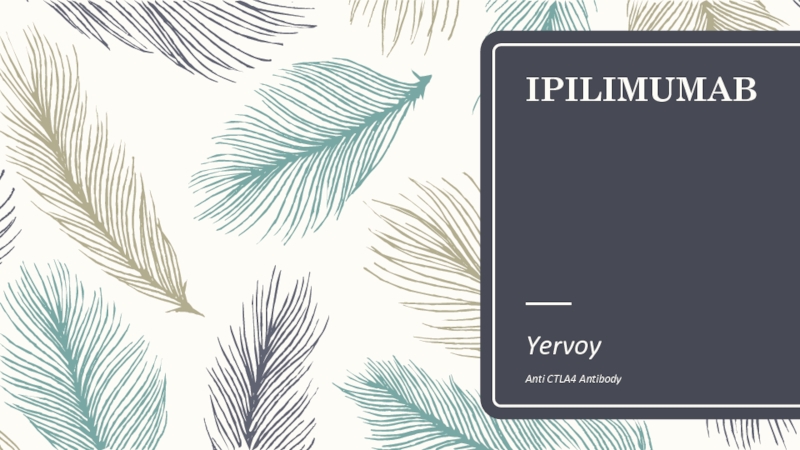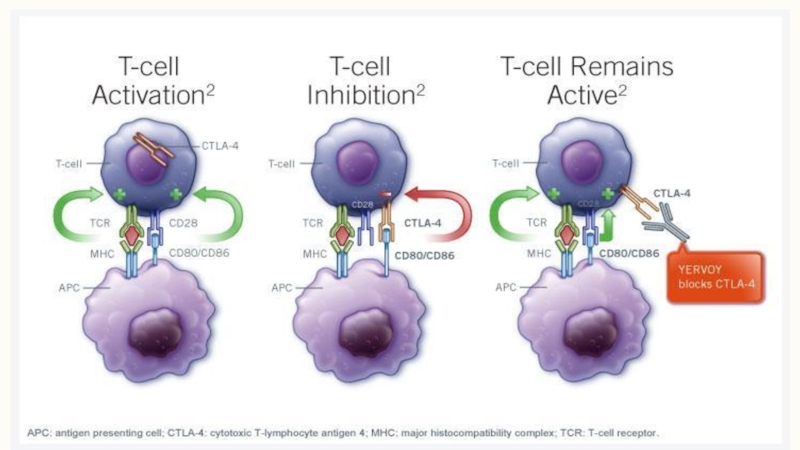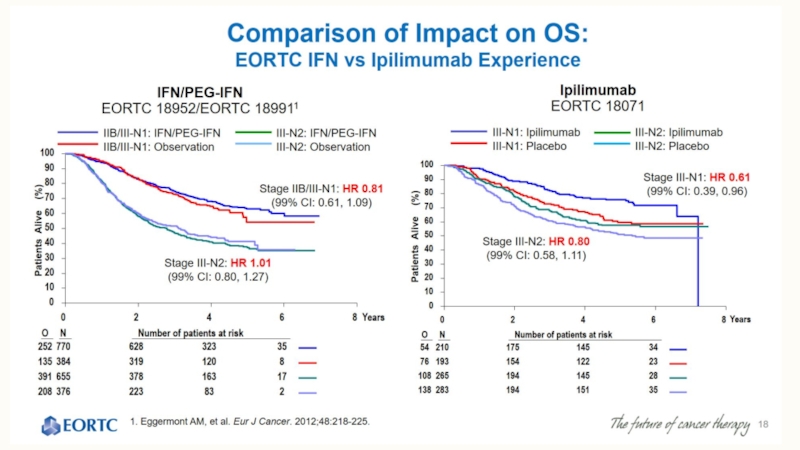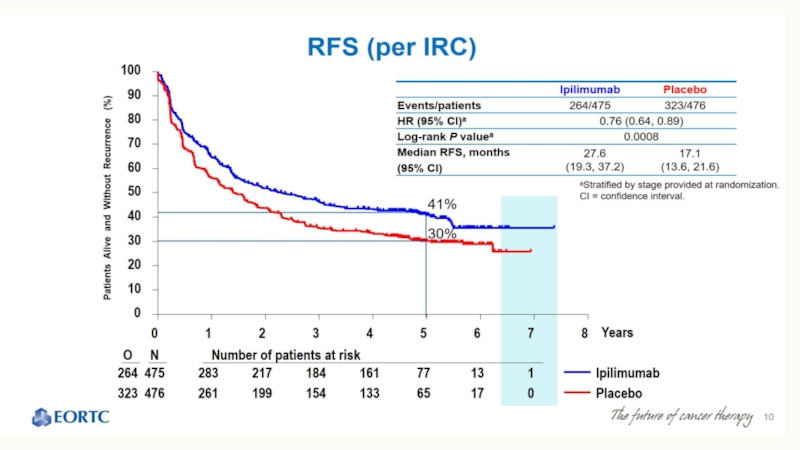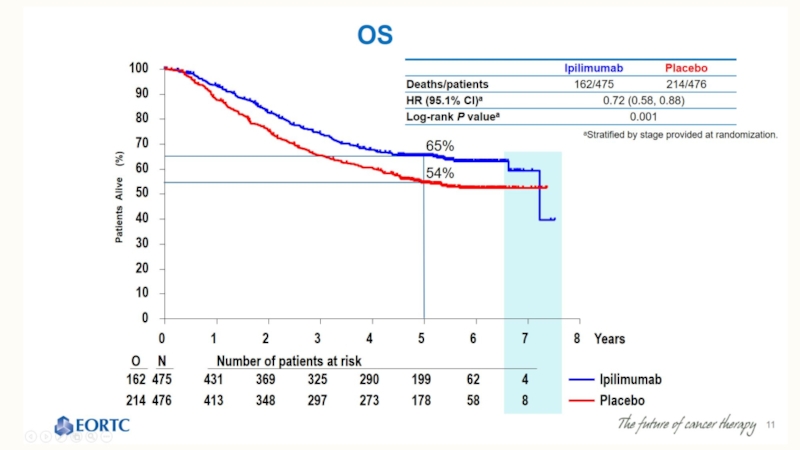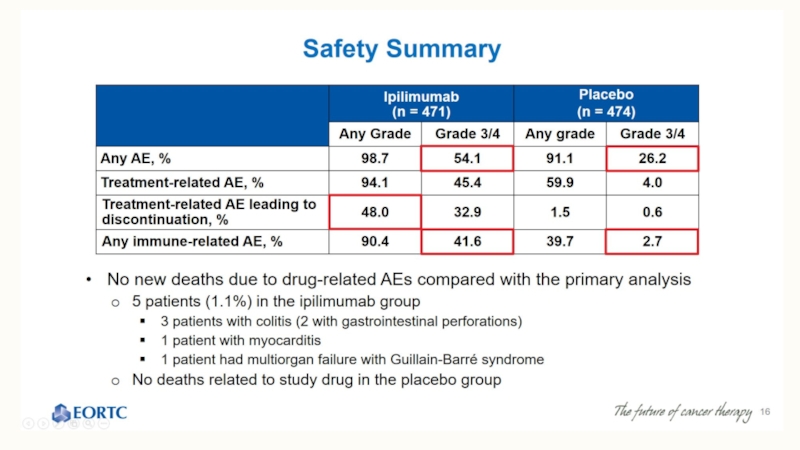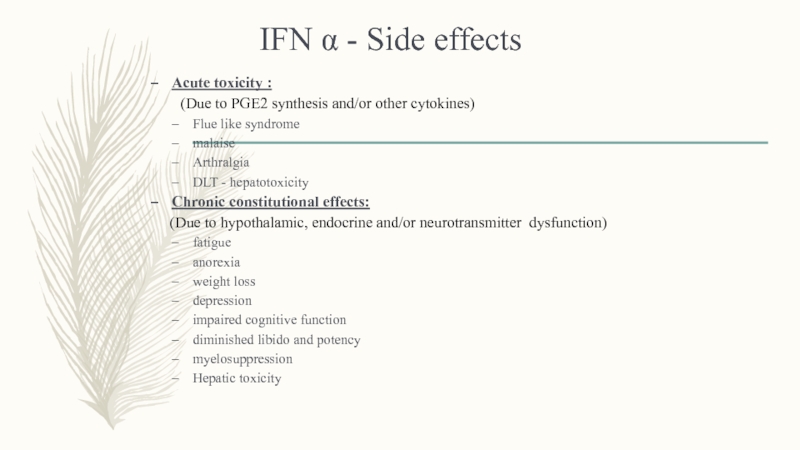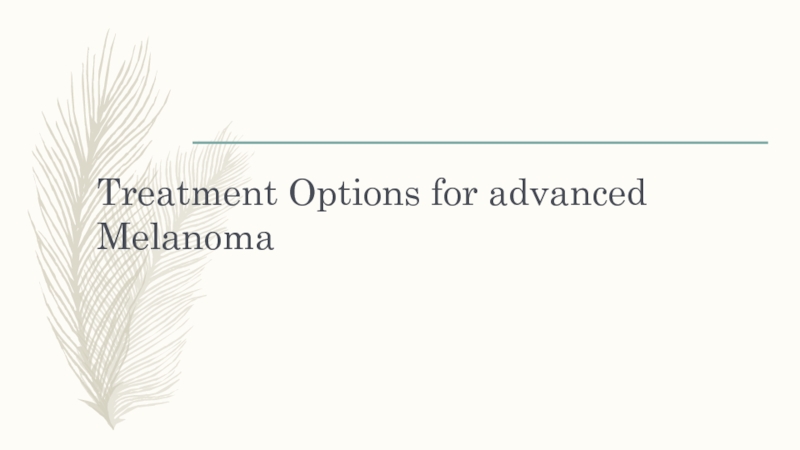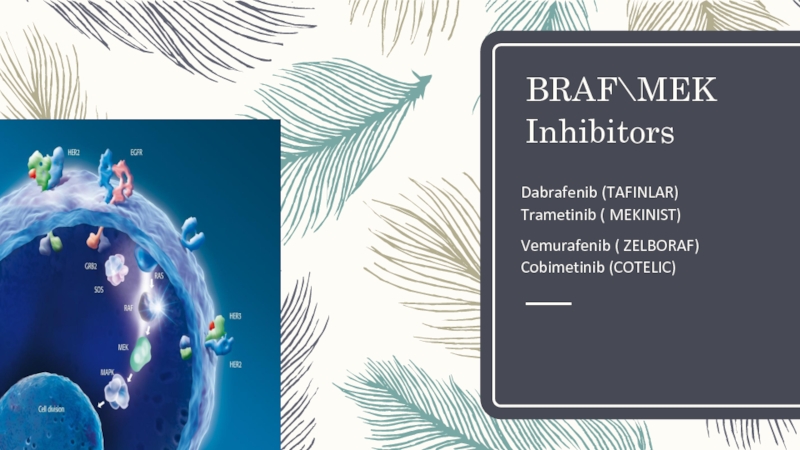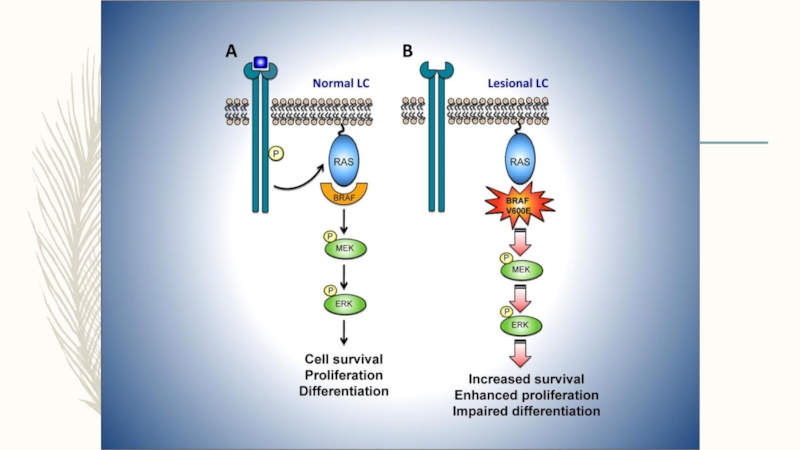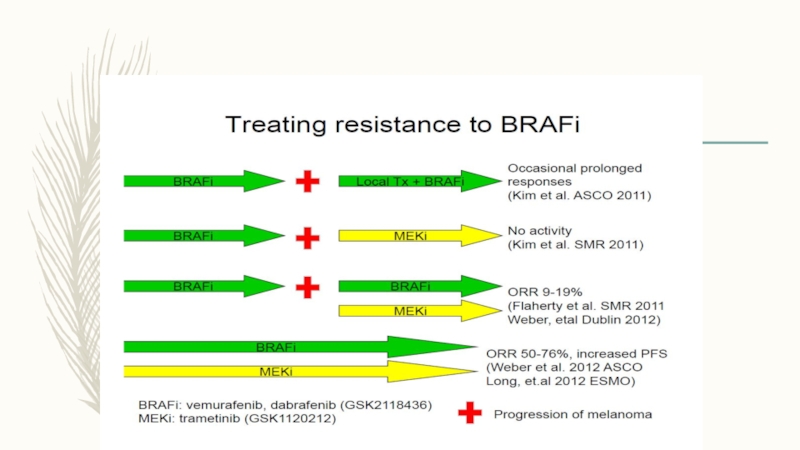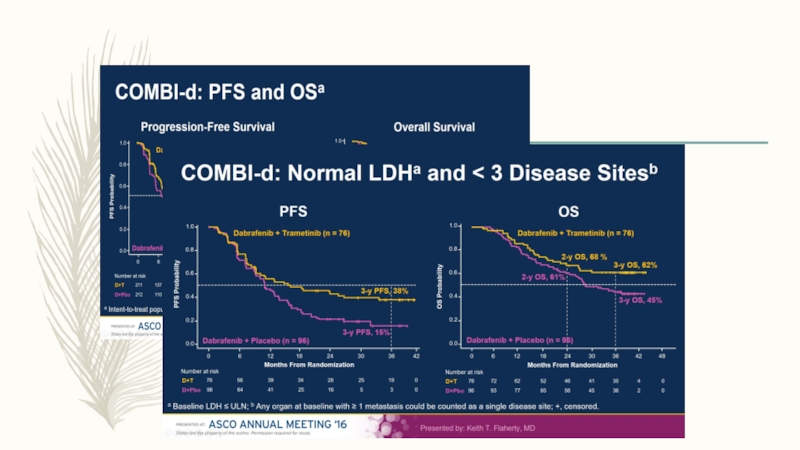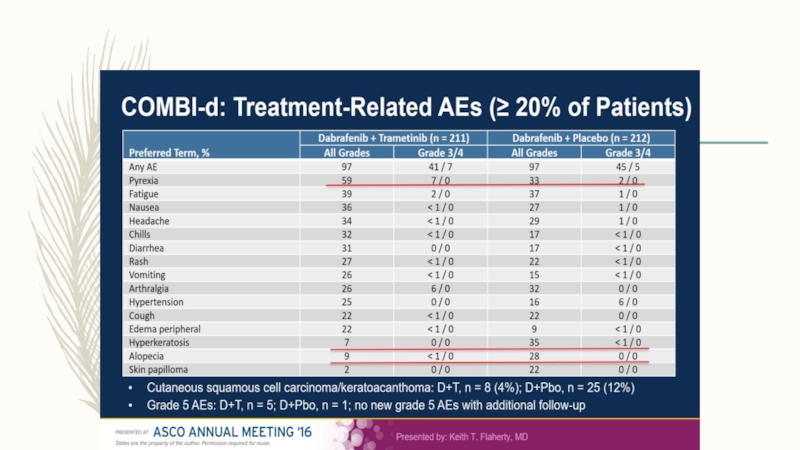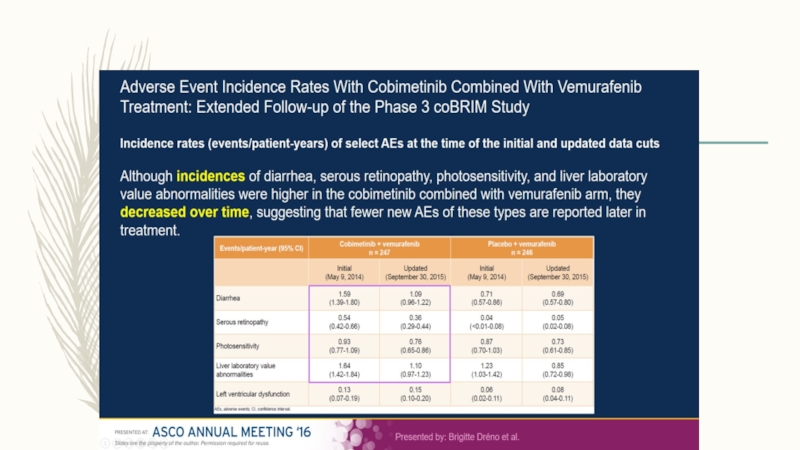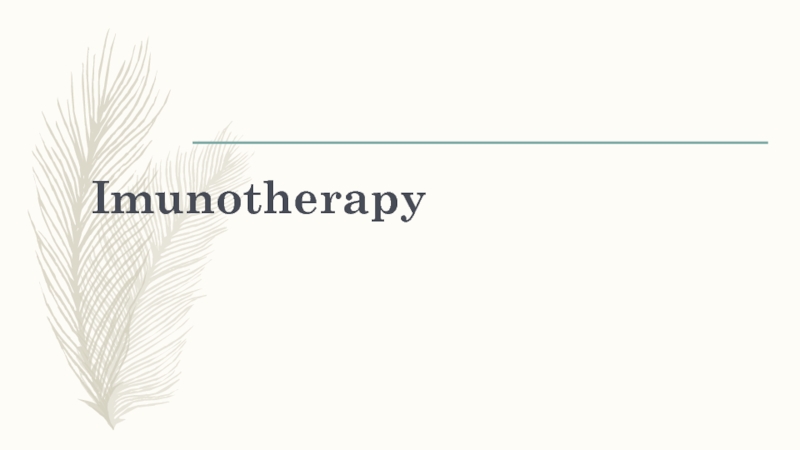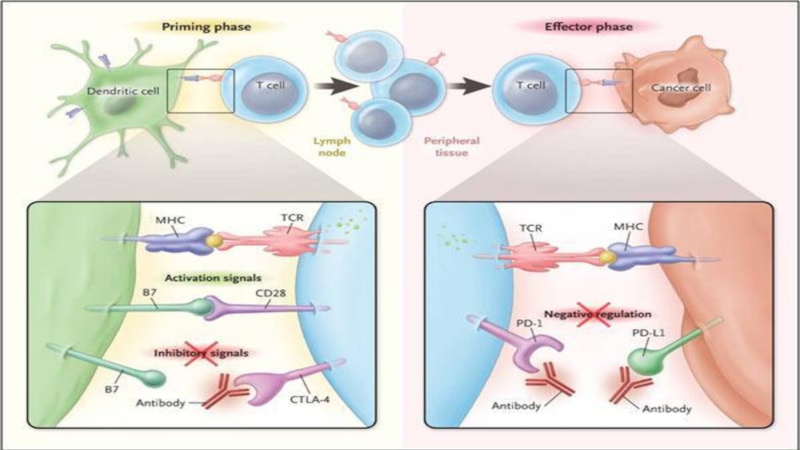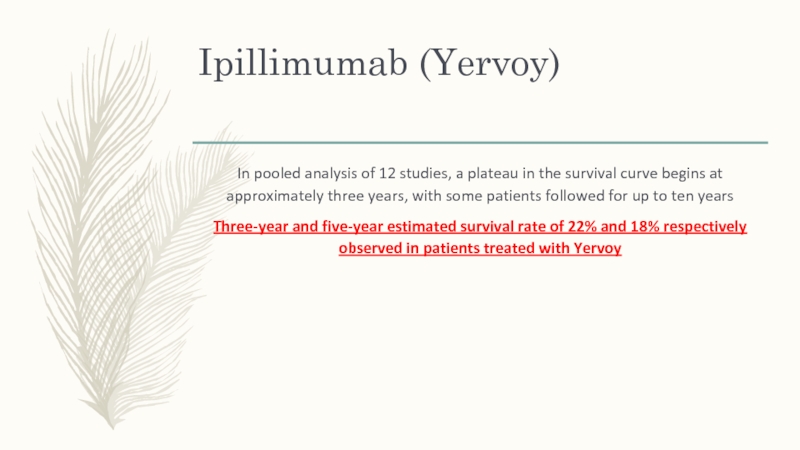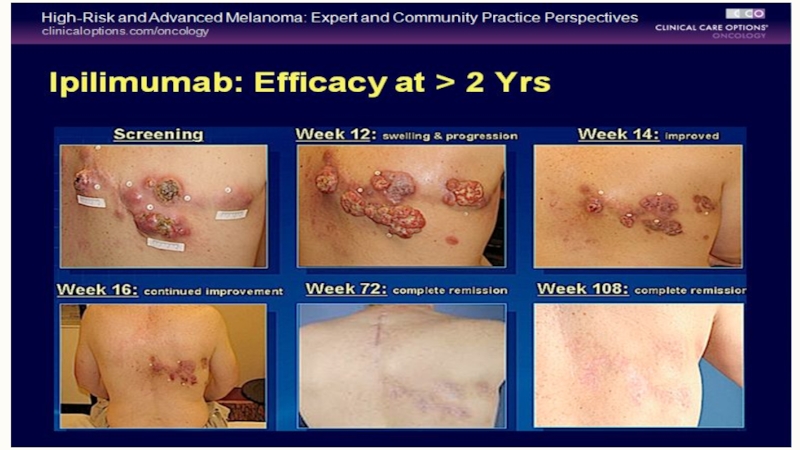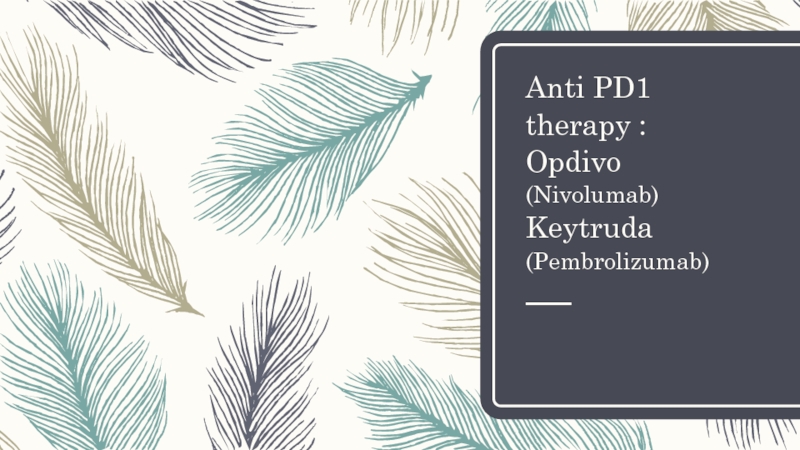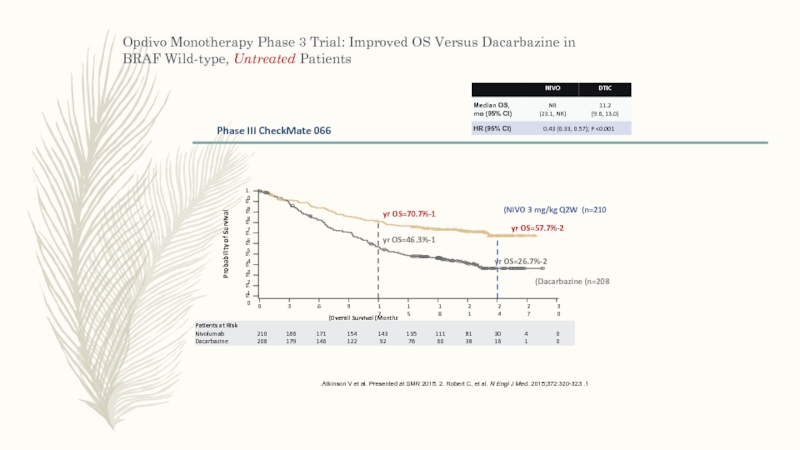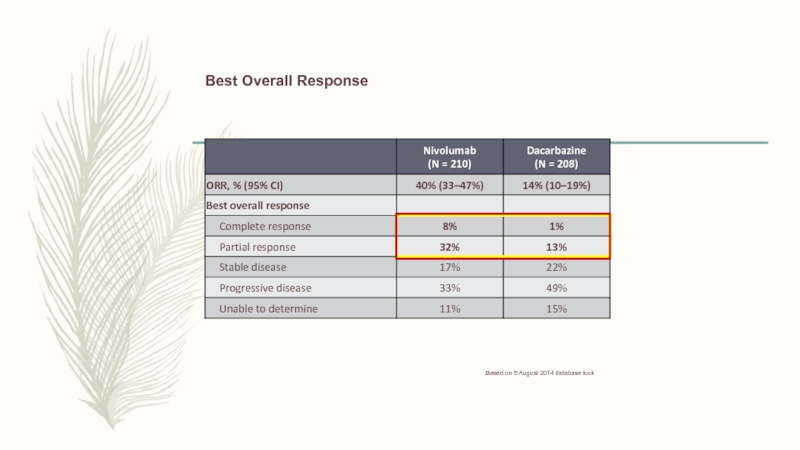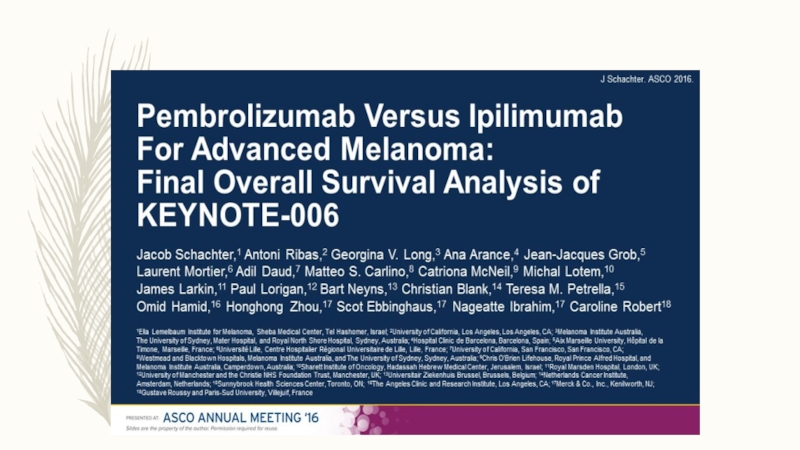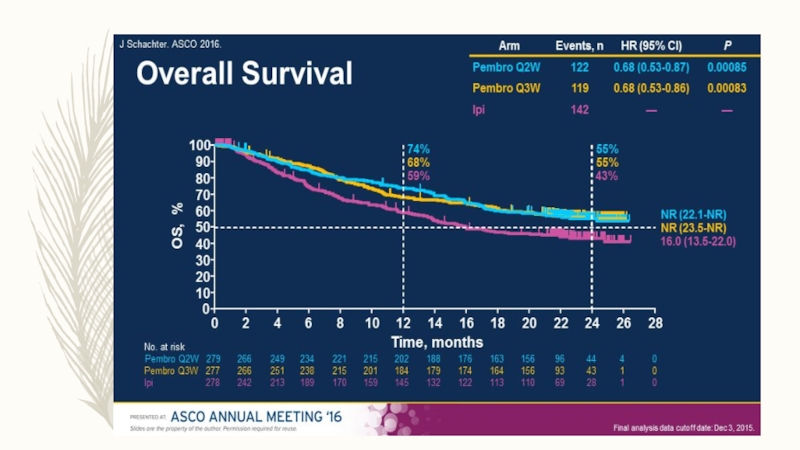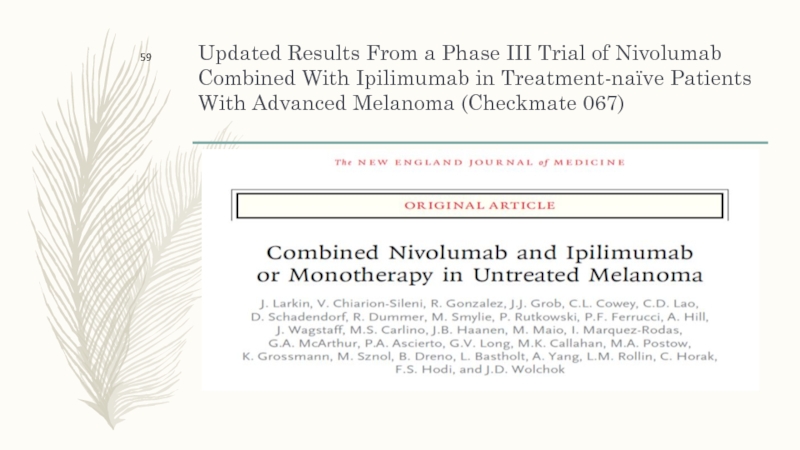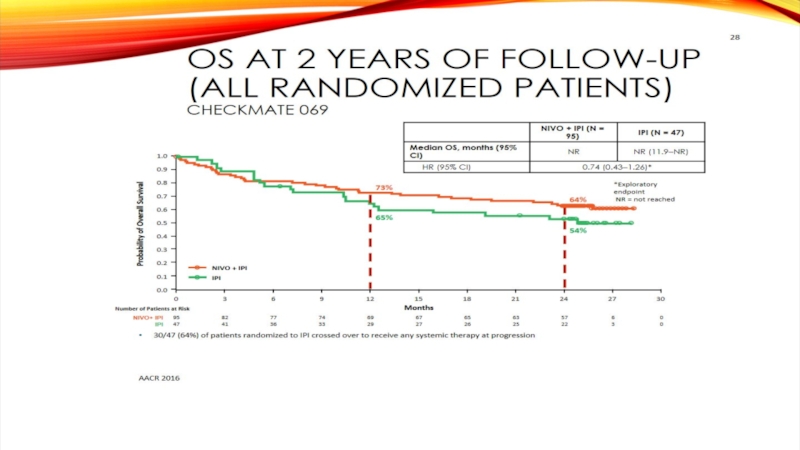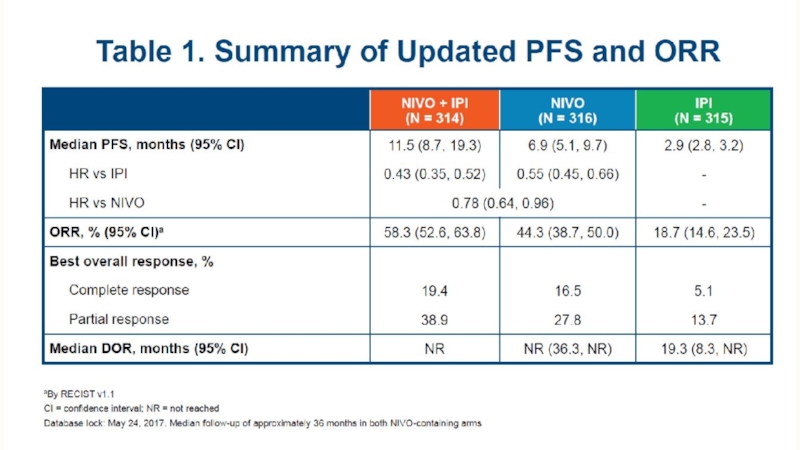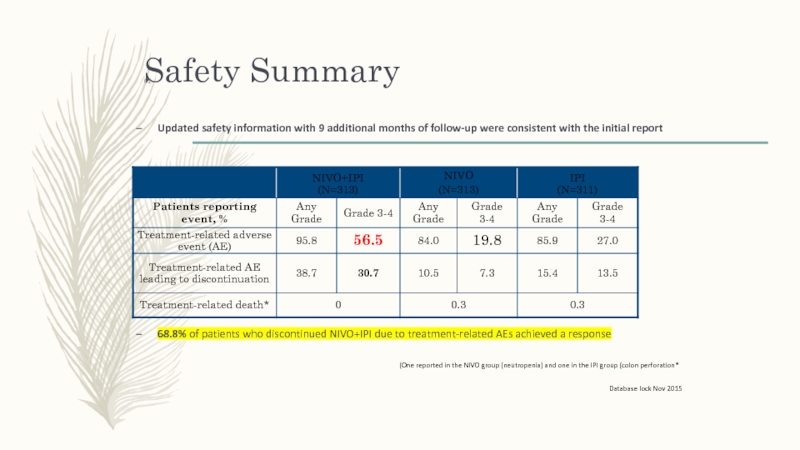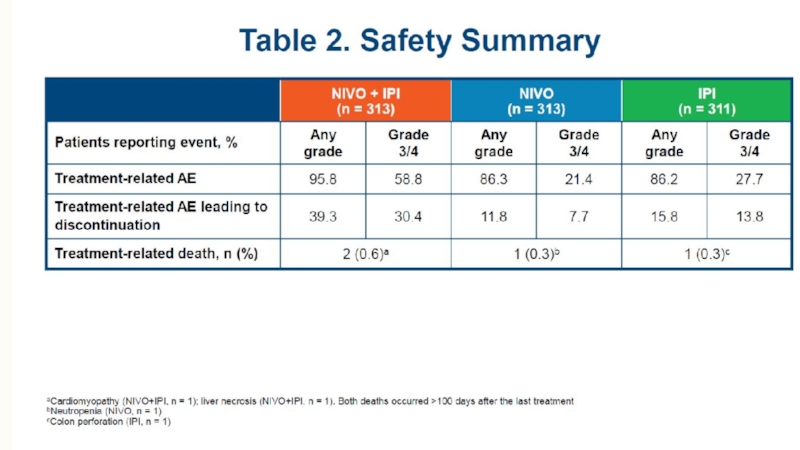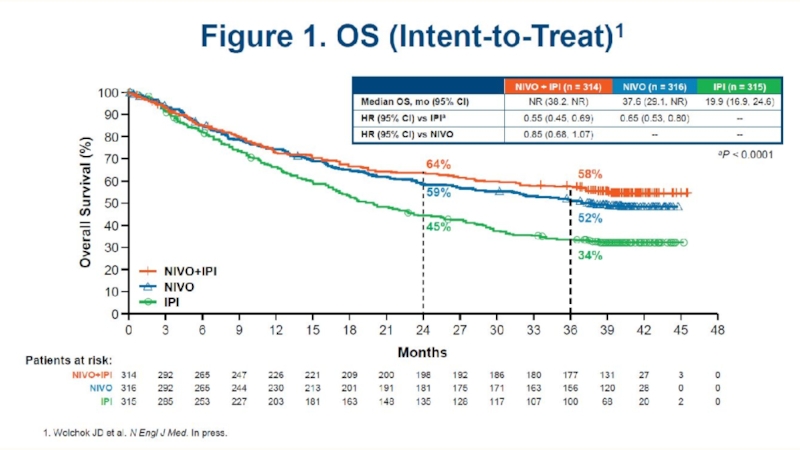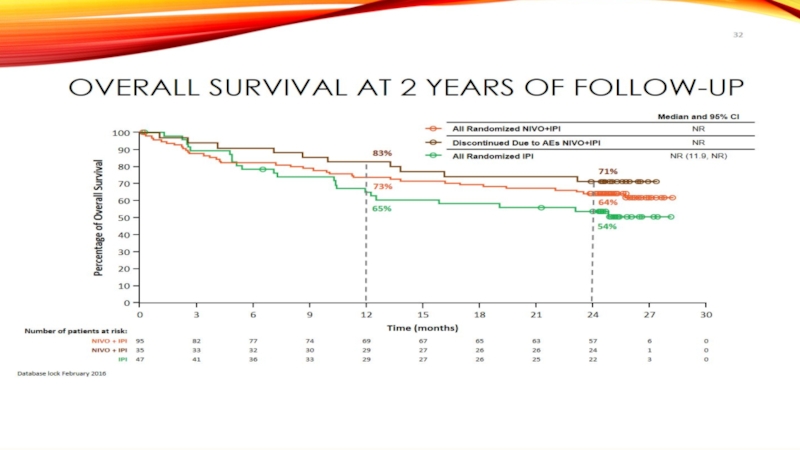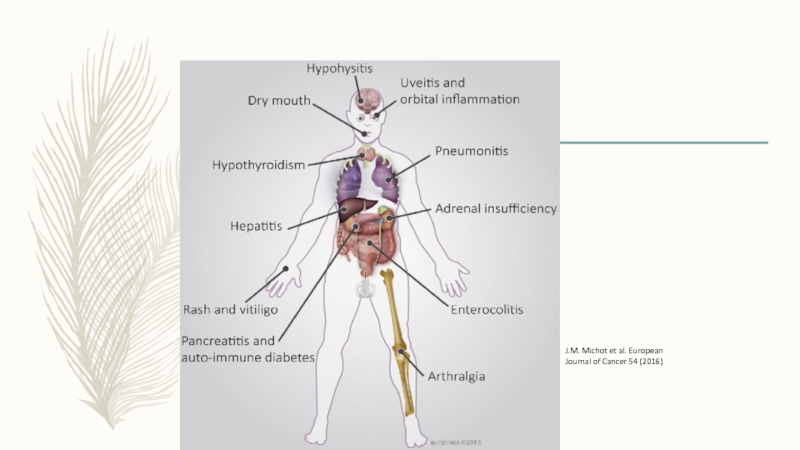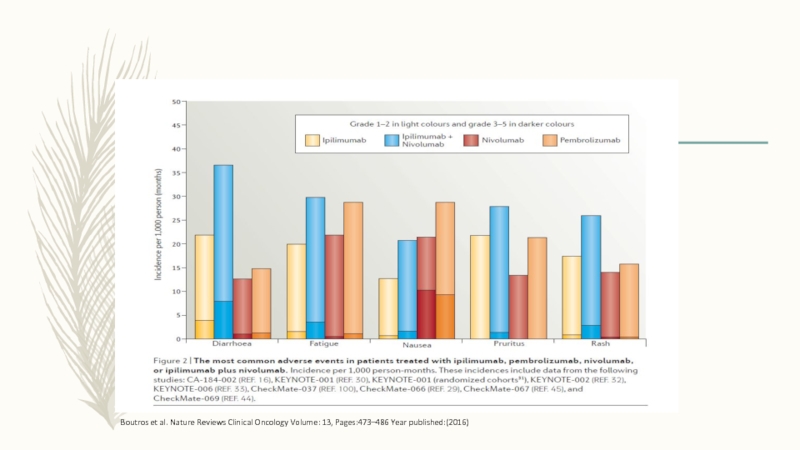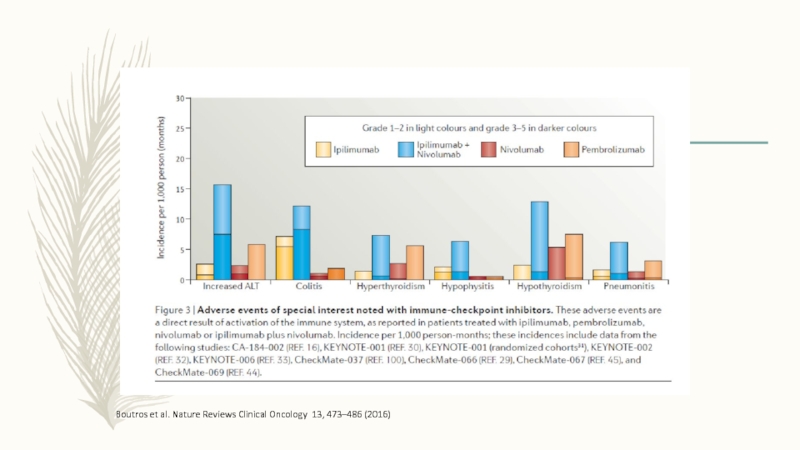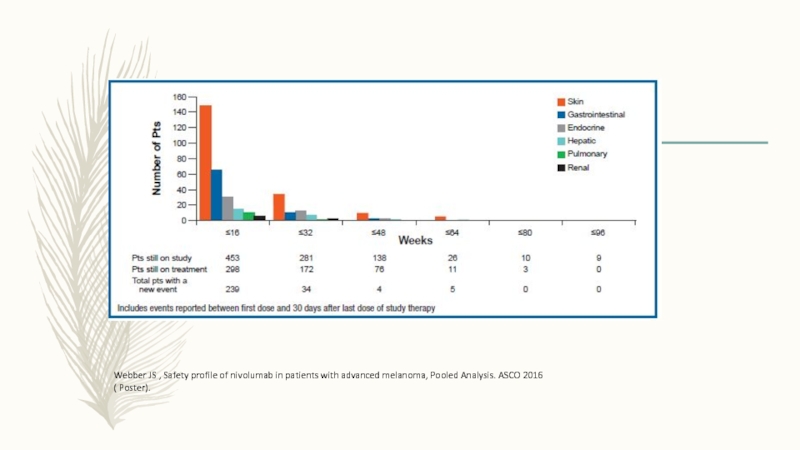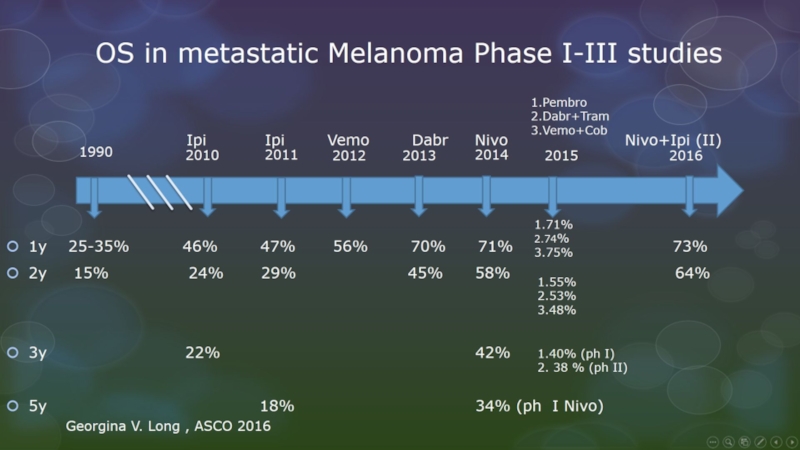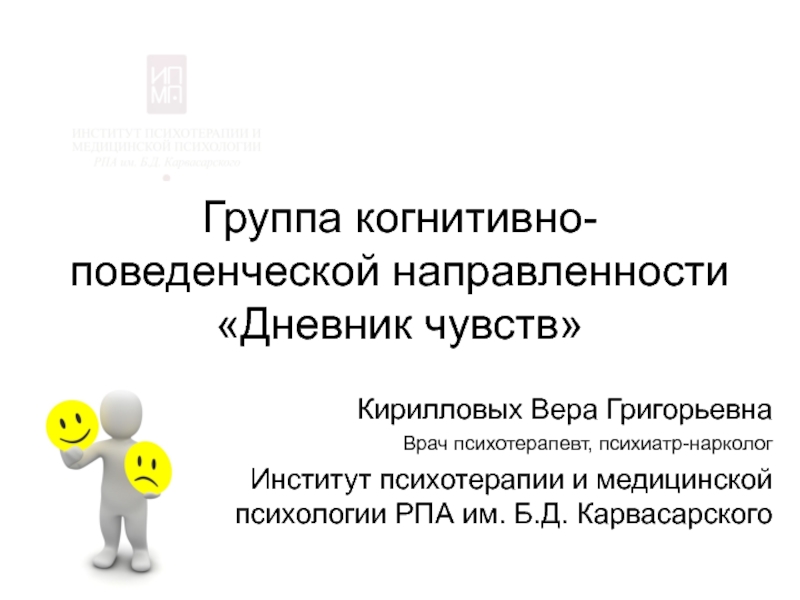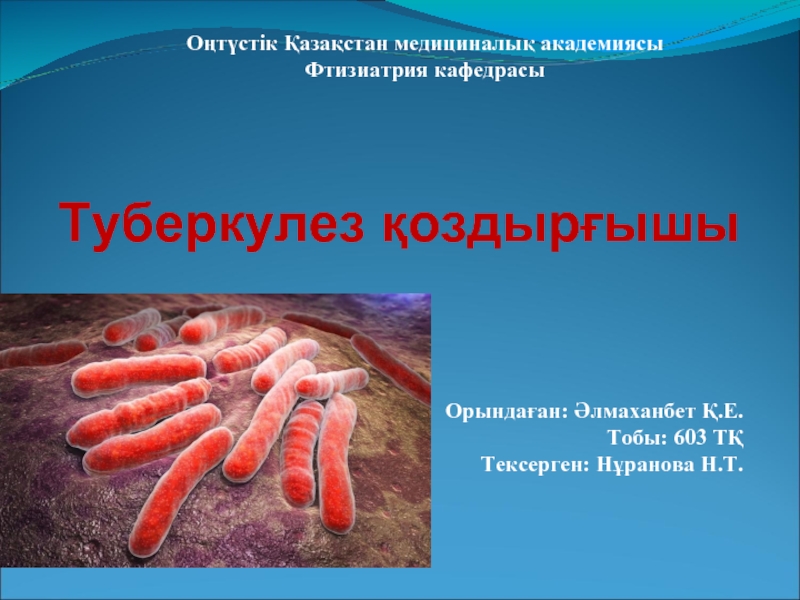- Главная
- Разное
- Дизайн
- Бизнес и предпринимательство
- Аналитика
- Образование
- Развлечения
- Красота и здоровье
- Финансы
- Государство
- Путешествия
- Спорт
- Недвижимость
- Армия
- Графика
- Культурология
- Еда и кулинария
- Лингвистика
- Английский язык
- Астрономия
- Алгебра
- Биология
- География
- Детские презентации
- Информатика
- История
- Литература
- Маркетинг
- Математика
- Медицина
- Менеджмент
- Музыка
- МХК
- Немецкий язык
- ОБЖ
- Обществознание
- Окружающий мир
- Педагогика
- Русский язык
- Технология
- Физика
- Философия
- Химия
- Шаблоны, картинки для презентаций
- Экология
- Экономика
- Юриспруденция
Malignant Melanoma презентация
Содержание
- 1. Malignant Melanoma
- 2. RISK FACTORS Fair skinned. Hair
- 3. Familial Atypical Mole Melanoma Syndrome Autosomal dominant
- 4. Xeroderma Pigmentosum Rare Autosomal recessive disease
- 5. Ultraviolet light
- 6. UVC (< 290 nm)
- 8. The ABCDEs of Melanoma Diagnosis Asymmetry One
- 9. TYPES OF MELANOMA
- 10. NODULAR Commoner in males Trunk is a
- 11. SUPERFICIAL SPREADING The most common type of
- 12. ACRAL LENTIGINOUS MELANOMA Commonest MM in nonwhite-skinned
- 13. SUBUNGAL MELANOMA Rare Often diagnosed late
- 14. LENTIGO MALIGNA MELANOMA Occurs as a late
- 15. AMELANOTIC MELANOMA Diagnosis is often missed clinically.
- 16. Mucosal melanoma Muc M approximately 1 %
- 17. Ocular melanoma OM is the most common
- 18. Skin biopsy Excisional Bx. Location Breslow thickness Ulceration Peripheral and deep margins.
- 19. Breslow Thickness: < 1 mm (T1)
- 20. Clark Level
- 21. Stage 0: (TisN0M0). melanoma in situ
- 22. Stage I: Local disease - superficial
- 23. Stage II: Local disease - deep invasion.
- 24. Stage III: Regional disease
- 25. Stage IV: Metastatic disease
- 26. Prognostic factors Depth of Invasion Ulceration Lymph
- 31. Sentinel lymph node
- 32. Sentinel lymph node mapping and biopsy
- 36. IPILIMUMAB Yervoy Anti CTLA4 Antibody
- 43. Treatment Options for advanced Melanoma
- 44. BRAF\MEK Inhibitors Dabrafenib (TAFINLAR) Trametinib ( MEKINIST) Vemurafenib ( ZELBORAF) Cobimetinib (COTELIC)
- 50. Imunotherapy
- 52. Ipillimumab (Yervoy) In pooled analysis of 12
- 54. Anti PD1 therapy : Opdivo (Nivolumab) Keytruda (Pembrolizumab)
- 55. Opdivo Monotherapy Phase 3 Trial: Improved OS
- 56. Best Overall Response Based on 5 August 2014 database lock.
- 59. Updated Results From a Phase III Trial
- 60. OS at 2 Years of Follow-up (All
- 61. Response To Treatment
- 62. Safety Summary Updated safety information with 9
- 65. Overall Survival at 2 Years of Follow-up
- 66. J.M. Michot et al. European Journal of Cancer 54 (2016)
- 67. Boutros et al. Nature Reviews Clinical Oncology Volume: 13, Pages:473–486 Year published:(2016)
- 68. Nature Reviews Clinical Oncology Volume:
- 69. Webber JS , Safety profile of
Слайд 2RISK FACTORS
Fair skinned.
Hair color other than black.
Excessive sun exposure .
Melanoma
Prior nonmelanoma skin cancer (basal cell and squamous cell carcinoma).
Presence of xeroderma pigmentosum or familial atypical mole melanoma syndrome.
Слайд 3Familial Atypical Mole Melanoma Syndrome
Autosomal dominant
Neoplastic risk
"atypical melanocytic nevus“
25-40% with
Слайд 4Xeroderma Pigmentosum
Rare Autosomal recessive disease
DNA repair enzyme defect
Photosensitivity
Photodamage
Cutaneous
Severe ophthalmological abnormalities
Early death from malignancy
Слайд 6
UVC (< 290 nm)
Completely absorbed by the
UVB (290-390 nm)
Absorbed by ozone, but 5-10% of it reaches the earth surface.
The exposure to the high penetrating UVB radiation leads to DNA damage .
UVA (520-400 nm)
Genotoxicity seems to be induced by indirect mechanisms
mediated by reactive oxygen radicals and associated with
chronic sun damage changes.
Слайд 8The ABCDEs of Melanoma Diagnosis
Asymmetry
One half of the lesion is shaped
Border
The border of the
lesion is irregular, blurred, or ragged
Color
Inconsistent pigmentation, with
varying shades of brown and black
Diameter
>6 mm, or a progressive change in size
Evolution
History of change in the lesion
Photos courtesy of the American Cancer Society.
Слайд 10NODULAR
Commoner in males
Trunk is a common site
Poor prognosis
Black/brown nodule
Ulceration and bleeding
Слайд 11SUPERFICIAL SPREADING
The most common type of MM in the white-skinned population
Commonest sites – lower leg in females and back in males
In early stages may be small, then growth becomes irregular
Слайд 12ACRAL LENTIGINOUS MELANOMA
Commonest MM in nonwhite-skinned nations
Usually comprises a flat lentiginous
Poorer prognosis.
Слайд 13SUBUNGAL MELANOMA
Rare
Often diagnosed late – confusion with benign subungal naevus, paronychial
Hutchinson’s sign – spillage of pigment onto the surrounding nailfold
Слайд 14LENTIGO MALIGNA MELANOMA
Occurs as a late development in a lentigo maligna.
Mainly
May be many years before an invasive nodule develops.
Слайд 15AMELANOTIC MELANOMA
Diagnosis is often missed clinically.
The lack of pigmentation is due
Слайд 16Mucosal melanoma
Muc M approximately 1 % of all melanomas .
Arise
Rarer sites of origin include the urinary tract, gall bladder, and small intestine.
Worse prognosis
Слайд 17Ocular melanoma
OM is the most common type of cancer to affect
Incidence: 5.3 to 10.9 cases per million
The incidence of ocular melanoma increases with age, and most cases are diagnosed in people in their 50s.
OM may be more common in people who have atypical mole syndrome .
Слайд 26Prognostic factors
Depth of Invasion
Ulceration
Lymph Node
Mitotic Rate (TNM staging system 2010)
LDH level
Patient
Anatomic site:
head and neck- scalp worse
extremity better than trunk
Слайд 31 Sentinel lymph node biopsy
SLN = First node(s)
Sentinel node biopsy is generally recommended for patients with melanomas at least 1 mm thick or more then 0.75 mm with 1 or more mitoses
Prognostic factor - data for patient.
Applying adjuvant therapy.
Survival benefit.
Слайд 34 Adjuvant therapy
Potential candidates
Stage
Stage III
Chemotherapy - not effective (DTIC).
Immunotherapy - IFN α and Ipillimumab
Vaccination – not effective.
Clinical trails ( anti BRAF , anti PD1, anti PD1+anti CTLA4- ongoing)
(+/-50% recurrence rate)
Слайд 42 IFN α - Side
Acute toxicity :
(Due to PGE2 synthesis and/or other cytokines)
Flue like syndrome
malaise
Arthralgia
DLT - hepatotoxicity
Chronic constitutional effects:
(Due to hypothalamic, endocrine and/or neurotransmitter dysfunction)
fatigue
anorexia
weight loss
depression
impaired cognitive function
diminished libido and potency
myelosuppression
Hepatic toxicity
Слайд 44BRAF\MEK
Inhibitors
Dabrafenib (TAFINLAR) Trametinib ( MEKINIST)
Vemurafenib ( ZELBORAF) Cobimetinib (COTELIC)
Слайд 52Ipillimumab (Yervoy)
In pooled analysis of 12 studies, a plateau in the
Three-year and five-year estimated survival rate of 22% and 18% respectively observed in patients treated with Yervoy
Слайд 55Opdivo Monotherapy Phase 3 Trial: Improved OS Versus Dacarbazine in BRAF
1. Atkinson V et al. Presented at SMR 2015. 2. Robert C, et al. N Engl J Med. 2015;372:320-323.
1-yr OS=70.7%
2-yr OS=57.7%
NIVO 3 mg/kg Q2W (n=210)
Dacarbazine (n=208)
Phase III CheckMate 066
Слайд 59Updated Results From a Phase III Trial of Nivolumab Combined With
Слайд 60OS at 2 Years of Follow-up
(All Randomized Patients)
Checkmate 069
30/47 (64%) of
Number of Patients at Risk
Months
*Exploratory endpoint
NR = not reached
Probability of Overall Survival
AACR 2016
Слайд 62Safety Summary
Updated safety information with 9 additional months of follow-up were
68.8% of patients who discontinued NIVO+IPI due to treatment-related AEs achieved a response
*One reported in the NIVO group (neutropenia) and one in the IPI group (colon perforation)
Database lock Nov 2015
Слайд 65Overall Survival at 2 Years of Follow-up
83%
71%
73%
64%
65%
54%
Database lock February 2016
Number of
NIVO + IPI
NIVO + IPI
IPI
Слайд 67
Boutros et al. Nature Reviews Clinical Oncology Volume: 13, Pages:473–486 Year
Слайд 68
Nature Reviews Clinical Oncology
Volume:
13,
Pages:
473–486
Year published:
(2016)
DOI:
doi:10.1038/nrclinonc.2016.58
Published online
04 May 2016
Boutros et al.
Слайд 69
Webber JS , Safety profile of nivolumab in patients with advanced
( Poster).
